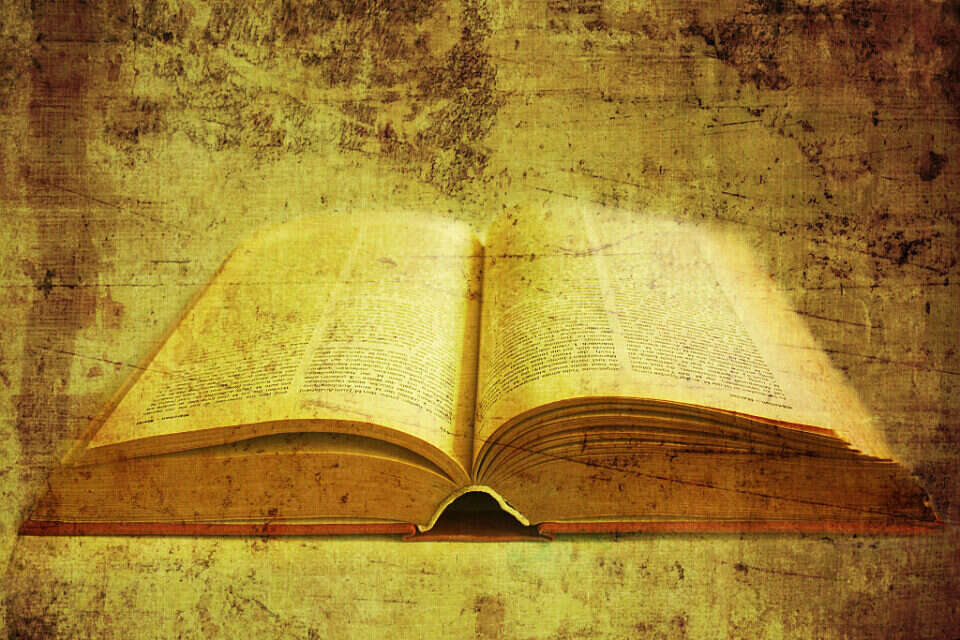Do you believe that the book of creation was written by our ancestor Abraham?
- You may want to reconsider this.
Although the Book of Creation is considered one of the earliest Jewish Kabbalah books, and some attribute its composition even to the first man, a new academic book challenges tradition and states: An Indian named "Mitri Opened".
In the book, "The Book of Creation: Between Hinduism and Kabbalah", the author Dr. Shemer Arieli points out the identity between the main ideas of the Book of Creation and the main ideas of Mitri Openish, which is one of the thirteen most important scriptures in the Upanishad literature in Hinduism. The rest is common to the Jewish connection and the Indian connection.
Sometimes the wording of the two essays is also the same: for example, when in the Book of Creation it is said that the spheres emanate from God and spread as a "flame is bound to an ember", in Mitri it is said that the Creator, the Brahman, shines as a "wheel of ember". Similarly, in the book of Creation it is said that God is revealed in three dimensions of place, time and man - "world", "year" and "soul" in the Kabbalistic language - and there is a similar saying in Mitri: "He who is in the fire, and he who is in the heart ", When fire, heart and sun represent place, man and time. In fact, even the word "counting" so common in Kabbalah, Arieli argues, is a word that originates in the Sanskrit language; The most important Indian mantra, "Um", also influenced the authors of the book of creation, and caused them to place the letters "Amash" at the top of their list of letters, as a Jewish substitute for the sacred Indian mantra.
From the great similarity between the philosophical and meditative approach presented by the Indian essay and the philosophical approach of the Book of Creation and the Lifestyles of the Therapoite Sect, Arieli argues that the Book of Creation was composed by members of this sect, which was a stream of ancient Judaism deeply influenced by Eastern religions. Their name, "the therapists", means "the healers", meaning not to heal the body but to heal the mind from all the bad diseases that bring pleasure, passion, sorrow, fear, greed and other human emotions. The diet of the therapists was poor and ascetic and they abstained from wine. Even on holidays they were content with bread and salt. Like the more familiar Essenes, the members of the Therapoite sect also chose a life of solitude and engaged mainly in fasting, prayer, and contemplation; During the week, cult members secluded themselves in their private rooms, fasted during the day and devoted themselves to study and writing, and on Saturday the community gathered to hear a lesson from the president that was defined as "proficient in opinions and beliefs."- and also practiced in front of him meditative poses for breathing training and concentration of consciousness.
Maitri Offenishd, the Indian treatise from which the authors of the Book of Inspiration are said to have drawn, is a book dealing with philosophical instruction and meditation, and presents a dialogue between a king and a sage, in which the king seeks to learn about Brahman "the soul of the universe" and his spirit. . Already at the beginning of the story the king retires from his post, choosing to seclude himself and ascend to the forest, where he stands and watches the sun with his hands raised. After a thousand days of solitude he appears before a generous sage before the former king and offers him a blessing for happiness in life, but the king rejects the blessing and prefers the spiritual knowledge that allows him to transcend bodily life out of union with the infinite all-embracing divinity. The influence of those Oriental teachings on Judaism probably occurred in Hellenistic Egypt which was an important multicultural junction, to which teachings from the East and the West drained and in which both Jews and Indians lived at the time.
"A book of creation," says Arieli, "is an adaptation of an ancient Israeli secret doctrine with an Indian philosophical method (Sanqiya-Yoga). So it is in fact a meditative instruction book based on an imported method of observing and adhering to the God of Israel. The sublimation of the universe on its various components in three levels: in space, time and in the human soul, through ten counts and twenty-two letters, but when comparing the book to the Indian Torah from which it was influenced, one finds in the book a truly yogic guidance, Man how to ascend in his mind to the source of all existence, the God of Israel, and to detach himself from the objects of the senses and his material rudeness. The book contains a copy of an Indian-meditative technique, and as is well known, in ancient Israel there is no evidence of such a technique,In contrast to Indian culture. The resemblance between a book of creation and Mitri finally solves the question of the enigmatic nature of the book. "
So a book of creation, Jewish or Indian?
Depends on who you ask, probably.
Um.





/cloudfront-eu-central-1.images.arcpublishing.com/prisa/TY47FSPP2RB4BEVHHZRVRO4QLY.jpg)



/cloudfront-eu-central-1.images.arcpublishing.com/prisa/57W3XJJOEVD6DPVJCW54P3NVUE.jpg)